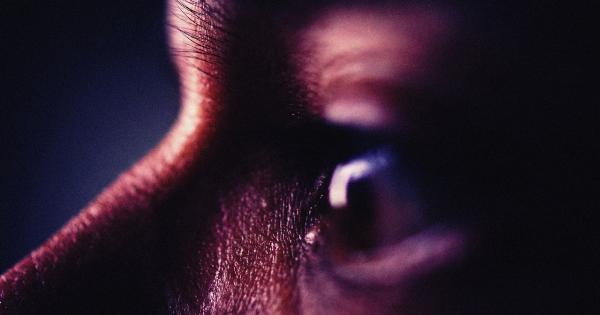A brain injury can have a profound effect on a person’s life, causing physical, cognitive, and emotional changes. One subtle yet significant impact of brain injuries is the loss of the sense of smell, known as anosmia.
In this article, we will explore the connection between brain injuries and smell loss, understand the underlying mechanisms, and discuss potential treatment options.
The Anatomy and Function of the Olfactory System
To comprehend the connection between brain injuries and smell loss, it is essential to understand the anatomy and function of the olfactory system. The olfactory system is responsible for our sense of smell and is closely linked to the brain.
The system comprises several key components, namely the olfactory epithelium, olfactory nerve, olfactory bulb, and olfactory cortex.
The olfactory epithelium, located in the nasal cavity, consists of specialized cells called olfactory sensory neurons (OSNs). These OSNs possess unique receptor proteins that bind to various odorant molecules, initiating the process of smell.
Upon detection of odorants, the OSNs transmit electrical signals to the olfactory nerve, which projects directly to the olfactory bulb in the brain.
The olfactory bulb processes the incoming signals before relaying them to higher brain regions, such as the olfactory cortex, where the actual perception and identification of smells occur.
How Brain Injuries Can Lead to Smell Loss
Brain injuries can disrupt the pathways and structures involved in the sense of smell, leading to a range of abnormalities.
The most common type of brain injury associated with smell loss is a traumatic brain injury (TBI), which occurs due to a severe blow or jolt to the head. TBIs can result from various incidents, such as vehicle accidents, falls, or contact sports.
One way brain injuries can cause smell loss is through direct damage to the olfactory system. The sheer force of impact can harm the delicate olfactory epithelium or rupture the olfactory nerve fibers.
Such damage can disrupt the transmission of signals from the nose to the brain, impairing the sense of smell.
Another way brain injuries can lead to smell loss is through the indirect effects of the injury on the brain itself.
A significant impact to the head can cause the brain to move forcefully within the skull, resulting in rotational forces and shearing movements. These forces can damage brain structures, including the olfactory bulb and olfactory cortex, leading to smell impairment.
The Prevalence and Impact of Smell Loss
Smell loss following brain injuries is more prevalent than commonly recognized. Studies indicate that approximately 5% to 39% of individuals with TBIs experience some degree of anosmia.
The severity of smell loss can vary, ranging from a partial distortion of smells (hyposmia) to a complete inability to detect odors (anosmia).
The impact of smell loss on individuals can be far-reaching and has implications for various aspects of life.
The sense of smell plays a crucial role in our daily experiences, including the perception of flavors, detection of danger (e.g., gas leaks), and forming emotional connections (e.g., memories associated with certain scents). Consequently, smell loss can lead to changes in appetite, reduced quality of life, social isolation, heightened anxiety, and depressive symptoms.
Diagnosing Smell Loss after Brain Injuries
Diagnosing smell loss following a brain injury involves a comprehensive assessment that often includes questionnaires and objective tests.
A detailed medical history, including the circumstances of the injury and any other symptoms experienced, is essential. The individual may be asked to provide information about the onset, progression, and specific qualities of the smell loss.
Additionally, a physical examination of the nose and sinuses may be conducted to rule out any underlying causes, such as nasal polyps or sinusitis, which can also lead to smell impairment.
Objective tests can help quantify the extent of smell loss scientifically.
Some commonly used tests include the Brief Smell Identification Test (BSIT), the University of Pennsylvania Smell Identification Test (UPSIT), and olfactory-evoked potentials (OEP). These tests involve identifying and distinguishing various odors or measuring the electrical responses of the olfactory system to specific smells, respectively.
Treatment Options for Smell Loss
While there is currently no definitive cure for smell loss following brain injuries, various treatment approaches can help manage the condition and potentially promote recovery.
1. Smell Training: Smell training involves regularly exposing oneself to a set of pleasant and stimulating smells to help re-establish connections in the olfactory system.
This technique aims to promote neuroplasticity and may improve smell function over time.
2. Medications: Certain medications, such as oral or topical corticosteroids, have been explored as potential interventions for smell loss.
These medications can help reduce inflammation and swelling in the nasal passages and olfactory tissues, potentially improving smell function.
3. Surgical Interventions: In some cases, surgical interventions may be considered to repair structural abnormalities in the nasal cavity or olfactory system.
For instance, polyps or nasal obstructions can be removed through surgery to alleviate smell impairment.
4. Olfactory Training: Similar to smell training, olfactory training involves repeatedly sniffing and identifying specific odors to stimulate the olfactory system.
This technique is often supervised by a trained professional, such as an otolaryngologist or smell disorder specialist.
5. Supportive Strategies: Implementing supportive strategies can help individuals cope with smell loss and mitigate its impact on daily life.
These strategies may include using alternative sensory cues for safety (e.g., visual or auditory cues for detecting gas leaks) and seeking emotional support or counseling to address the emotional challenges associated with anosmia.
Research and Advances in Smell Loss Rehabilitation
Advancements in research and technology offer hope for improved understanding and treatment of smell loss following brain injuries.
Recent studies have focused on regenerating olfactory sensory neurons using stem cells or other regenerative techniques. By replacing damaged or lost olfactory neurons, researchers aim to restore the sense of smell.
Although these approaches are still in experimental stages, they show promising potential for future therapeutic interventions.
Additionally, the advent of virtual reality (VR) and other sensory substitution systems may provide alternative ways to experience smells for individuals with anosmia.
Virtual reality environments can simulate specific scents to help trigger memories or evoke emotional responses, potentially compensating for the loss of real-life olfactory experiences.
Conclusion
The loss of smell (anosmia) following a brain injury can have a profound impact on a person’s life.
Whether caused by direct damage to the olfactory system or through indirect effects on the brain, smell loss is a common and often overlooked consequence of brain injuries.
While there is currently no definitive cure for smell loss, various treatment options, such as smell training and medications, can help manage the condition and potentially promote recovery.
Advancements in research, including stem cell therapy and virtual reality, hold promise for future interventions.
It is crucial to raise awareness about the connection between brain injuries and smell loss, ensuring that individuals receive appropriate medical attention, support, and resources to navigate the challenges associated with this sensory impairment.



























